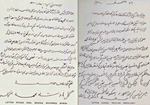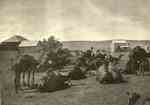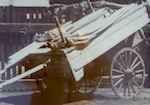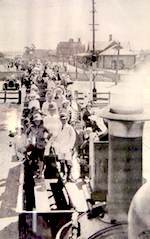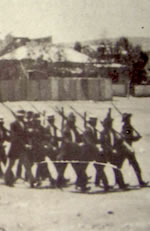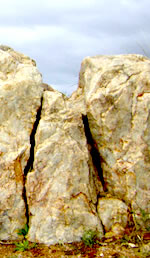 | |||||||

|
Picnic at Broken Hill a project from jon rose |
||||
|
As our sycophantic government has again excitedly put its hand up for America's next impossible (to win) war, let's consider the traditional nexus between war and religion as fought out 100 years ago in Broken Hill, New South Wales Unlike the book and film 'Picnic at Hanging Rock', 'Picnic at Broken Hill' is a true story - except that the picnic didn't happen either. On New Year's Day 1915 at 10 am in Broken Hill, 1200 miners and families scrambled on board 40 open Iron ore carriages fitted with benches and set off to Silverton for what was supposed to be a picnic. About 3 miles out of town, parallel with a grave yard, the picnic train was attacked by two former cameleers ('Afghans') from the North East "Ghan town" of Broken Hill. Their names were Mullah Abdullah and Badsha Mahommed Gool. The week before, Abdullah had been convicted for slaughtering sheep by the traditional halal method in an un-licensed building. He saw this as continuing racial and religious based harassment, previously he had been on the receiving end of racist name calling and stone throwing by local children. Mahommed Gool was well known as the local ice-cream man, and the idea of shooting up some of his opposing British empirial customers, under the auspices of the Sultan of The Ottoman Empire, appealed. The two men, flying a home-made Turkish flag (neither of them were Turkish), used the horse-drawn ice-cream cart from which to launch their offensive. Australia was rife with pro-British war fever and anti Turkish and German sentiment; the two ex-camellers clearly felt they were in the wrong place and on the wrong side, so they joined together to start their own war. Knowing how it would end they both wrote suicide letters. This composition Picnic at Broken Hill is a musical transcription of those suicide letters. I have used a pitch to MIDI program to convert the original Urdu suicide letters into notation, then re-worked the material to make it playable on piano - keeping the rhythms, pitches, and delivery of the Urdu as much as possible in tact. The left hand performs Badsha Mahommed Gool's text, and the right hand in the piano score performs the words of Mullah Abdullah. Mahommed Gool's suicide letter is more a proclamation of intent, and Mullah Abdullah's letter (as you might expect) is more in the expression of a prayer. The attack ended in a shoot out at White Rocks to the north of Broken Hill. Three people were killed (two while sitting in the train), seven wounded, before armed police and citizens were able to overcome the Afghans position; Abdullah was already dead, Gool Mahomed was still alive despite having been shot 16 times. He was taken to a hospital and died there. A 69 year old resident, living in a house behind the local pub was hit by a stray bullet while the 90 minute gun battle lasted, and died; despite his daughter's warning, he had insisted on some wood chopping in his back yard (in mid-summer?). Some town's people viewed the proceedings from a polite distance; others grabbed a gun and joined in. The dead 'Turks' were buried at night by the police in unmarked graves, no one knows to this day, where the last resting place of these two men are. This is a bizarre and unlikely story. But I would argue that sending 60,000 young men (8,000 of whom would die) to the other side of the world to invade a country (Turkey) that had never done any harm to any Australian state, and then to turn the resulting defeat and fiasco into an annual "nation building" celebration (Anzac Day), is not just bizarre, it's hideous. The photographs used in the visual presentation, that accompanies the music, show a number of then and now images. The original railway line from Sulphide Station Broken Hill to Silverton is no more. The exact location of the ditch from where the attack took place is now overgrown and used by local boys as a route for their track bikes. The site backs onto the town cemetery and a place where all the funeral flowers and tributes to the dead are burned - much of it blown away by the wind. Next to this is the war memorial upon which is written LEST WE FORGET. The backside of the war memorial faces the former railway line and place of attack - clearly to be forgotten. Recent acknowledgement of the value of tourism has encouraged an official commemoration. It is placed a few hundred meters from the actual location where the opening shots were fired, and takes the form of one of the ore wagons which may or may not have been used in the actual picnic train of January 1915. Apart from remnants of railway track and fencing, along the route of the railway line lie a number of half buried picnic items. A number of tins and sandwich box remains can be spotted. Public train picnics were regular events in a mining town with little privately owned transport. A glaring white replica of the ice cream cart, on which the 'Afghans' ran up a hurriedly stitched Turkish flag, can now be found situated 3 miles away at White Rocks on the northern outskirts of Broken Hill where the final shoot out took place. It is assumed Mullah Abdullah and Gool were intending to get back to the 'Ghan Town' or camel camp, their place of abode on the North Eastern side of town. On this site today stands a modest tin shed Mosque, the last remaining artifact of Moslem and cameleer culture in Broken Hill. As with most unlikely stories, the 'Battle of Broken Hill' has had conspiracy theories added to it from anybody with an axe to grind. One has the 'Turks' drugged out of their heads on Chlorodyne (the ubuitous pain relief of its time, containing opium, cannabis, and chloroform.) provided by visiting Indians (why Indians, why not aliens?) who set them up. Others at the time blamed the Germans (who else?) and the fateful day ended with the burning down of the Broken Hill German Club. A Turkish nationalist has our two suiciding chums as noble resistant fighters who took out 70 Australian soldiers on a troop train (not a picnic train at all you see?) and so it goes on. As Jean Cocteau put it 'History is facts that become lies in the end; legends are lies which become history in the end'. Jon Rose 11/8/2014
Picnic at Broken Hill is performed by one of Australia's leading pianists and champion of new music: Gabriella Smart piano www.jonroseweb.com |
|||||
 |
